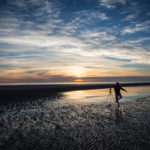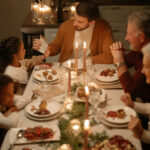
Cameras with bulb settings can also be fitted with a locking cable release so that it isn’t necessary to keep your finger on the shutter for long exposures. If your camera doesn’t have a cable release, you can use the self-timer option found on most cameras. This will eliminate camera vibration from your hands.
A tripod, or something to rest your camera on, is essential because the camera must be completely still during the time that the shutter is open. If you want to make a fast-moving car blur as it speeds by you, a relatively fast shutter speed of 1/20 of a second may give you the results you are after, however, if you want to make stars in the nighttime sky look like glowing rings as the earth rotates, your exposure may last all night.

In general, slow shutter speeds will allow a lot of light into the camera, which means that you will want to use a small aperture (ie. f/22) to avoid over-exposing the shot. In bright daylight it will be necessary to use the lowest ISO available and a neutral density filter to cut the light down.
Some great effects and shutter speeds to try are:
Moving stars: several hours Moving cars at night: 10 seconds Waterfalls: 4 seconds + Amusement park rides: 1 second
About the Author:
Rick Blythe runs Camera-News.com, a site about digital cameras and photography.
For Further Training on Night Photography Tricks:
Check out this best-selling eBook on how to do amazing photography tricks and photoshop effects. It can be found here: Trick Photography and Special Effects
Like This Article?
Don't Miss The Next One!
Join over 100,000 photographers of all experience levels who receive our free photography tips and articles to stay current:






Those were some tips. I was bit confused earlier as to why we need a small aperture, when infact we are trying to capture as much light but then you clarified it by mentioning that it may cause over exposure. Thanks.